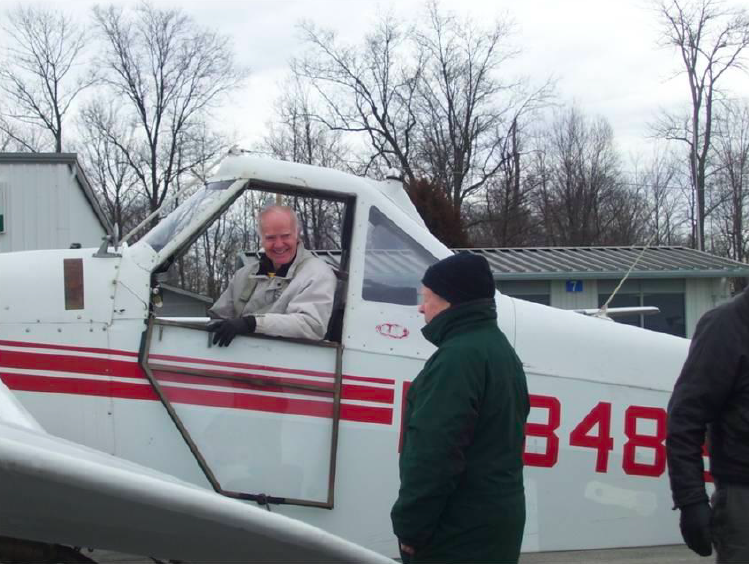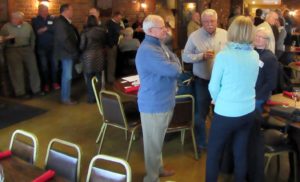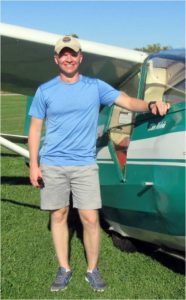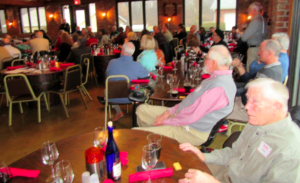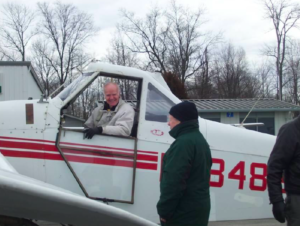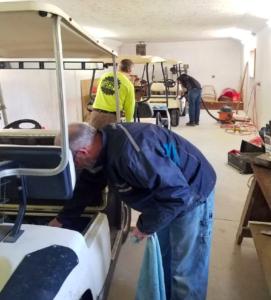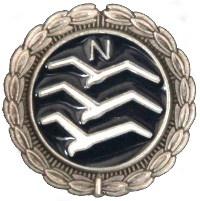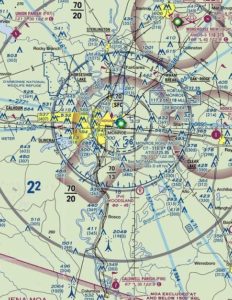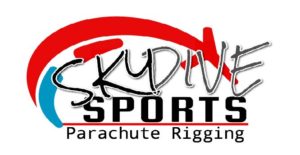UPCOMING EVENTS
- Mar 3 Board of Directors meeting- 9:30 AM – John Lubon
- Apr 7 Board of Directors meeting- 9:30 AM – John Lubon
- Apr 11 Annual Meeting of SSD dba CCSC & Election – John Lubon
- Apr 14 Spring Cleanup at CCSC – Keith Kilpatrick
- Apr 15 Spring Cleanup at CCSC – Keith Kilpatrick
- Apr 21 Cincinnati Chapter of Ferrari Club of America Event – Maury Drummey
- Apr 21 Pot Luck Dinner Apr 21 Pot Luck Dinner
- May 19 WPAFB Airmen Recreation Program event at CCSC – Kevin Price
- May 20-31 1-26 Championship Contest – Steve Statkus
- Jun 9 WPAFB Airmen Recreation Program event at CCSC – Kevin Price
- Jun 16 Cincinnati Chapter of Ferrari Club of America Event – Maury Drummey
- Jun 16 Pot Luck Dinner Jun 16 Pot Luck Dinner
- Jul 15-20 YEW 2018 – Steve McManus
- Aug 3 WPAFB Airmen Recreation Program event at CCSC – Kevin Price
- August Adult Camp
- August Sailplane Weight & Balance Party – Chuck Lohre
- Oct 21 WPAFB Airmen Recreation Program event at CCSC – Kevin Price
ANNUAL AWARDS CELEBRATION AND BANQUET
Our club has a tradition of celebrating the soaring achievements of members at a great banquet and we are pretty good at guessing when it will snow to create the traditional environment for the event. This past Saturday the weather appeared to be trying to play its normal game with us but the snow had disappeared by banquet time and did not impact the fun. Although it was chilly, there were many February 20, 2018 members who chose Valley Vinyards outdoor grill to cook their steak or salmon just the way they wanted it. Members and guests arrived for the social hour and John Lubon faced a very difficult challenge interrupting all the lively conversations and getting the group’s attention for the awards ceremony.
After a brief review of some of the contributions from members that help make and keep CCSC a heathy strong club (now one of the top three clubs in the nation) John used OLC results to show that our pilots also know how to soar. Although CCSC ended up 16th in North America in the 2017 OLC Club ranking that John showed, our pilots did well compared with the other 1400 North American pilots who participated in the 2017 contest, especially considering the weather and soaring conditions in Ohio in 2017. Dan Reagan topped the list of 18 CCSC pilots who submitted flights to OLC in 2017. He submitted 29 flights to OLC with a combined total of 139 hours flight time! That got Dan the 17th place ranking out of 1400 pilots in North America in the Champion OLC 2017 contest. At this point Dan is ranked 3rd in the Champion OLC 2018 contest. The achievements of the 18 CCSC pilots who submitted flights to OLC provided the right background for Tom McDonald’s presentation about the cross country training program which is being developed for CCSC members. (See Tom’s article on pages 7-8 and expect to read more about the cross country training initiative in forthcoming newsletters.) Bob Miller then showed scenes from his soaring adventures in New Zealand early in 2017. With that look at where cross country soaring skills can take a pilot attention turned to club awards.
Youth/Student Member with Most Flights
The Youth/Student pilots with the most flights in 2017 were: 1. Alex Teffenhardt – 33 flights 9shown), 2. Ethan Maxwell – 26 flights, 3. Micah Ferguson – 24 flights
Tow Pilot with Most Launches: Don Green
Again Don Green topped the list of most active tow pilots: 1. Don Green – 230 tows, 2. Larry Kirkbride – 119 tows, 3. Dick Scheper – 118 tows. Thanks to all our tow pilots for their service to the club!
New Ratings in 2017
• Zachary Siefker – Instructor
• Chris Uhl – Instructor
• Tony Rein – Glider Rating
• Darin Caviness – Glider Rating
Most Active Instructors in 2017
1. Bob Miller – 135 instructional flights
2. Bill Gabbard – 92 instructional flights
3. Larry Kirkbride – 75 instructional flights
Adult Member with Most Flights in 2017
1. Darin Caviness –
2. Joe Jaap – 50 flights
3. Tony Rein – 44 flights
Crew with Most Launches in 2017
1. 2nd Saturday – 207 launches
2. 2nd Sunday – 199 launches
3. 1st Sunday – 187 launches
Trustee Award
It was announced that Tim Christman is the recipient of the Trustee Award this year. Unfortunately Tim was not present to receive the award. The current plan is to present the award to Tim at the meeting of the Board of Directors on March 3, 2018. Tim is a long time member of CCSC and has served the club in many roles, most recently as a Director overseeing the maintenance of our fleet of tow planes and coordinating the efforts of our tow pilots. When you see Tim be sure to thank him for his contribution to making this a great club.
THIRD SUNDAY CREW REPORT – TONY REIN
Eight members of the Third Sunday crew showed up and went to work on the annual inspection and servicing of our fleet of golf carts. There were no flights due to wet field conditions.
WHICH BADGE DO YOU PLAN TO EARN IN 2018?
In prior issues there has been discussion of the A, B, C, and Bronze badges. If you do not have all of these already, hopefully you are formulating your plan to get each of them this year. Discussion of the Silver Badge was started with an overview of the requirements: Silver Altitude is a 1,000-meter (3,281-foot) altitude gain above an in-flight low point; Silver Duration is a 5-hour flight time after tow release and Silver Distance is a 50-km (31.07 mile) cross country flight.
Exactly what do you have to do to complete the Silver Duration requirement? Well, for one thing the time starts at release, not at the start of the tow. After release you need to fly for at least 5 hours. Your release altitude must be not more than 1000 meters (3,281 feet) above the finish point, i.e. you can take a 3,000 foot tow, but that’s all. Keep the extra 281 feet in reserve for instrument error, etc.
What evidence do you need to provide about the release altitude and the time between release and landing? It is acceptable to find an Official Observer (person with at least a B badge who is familiar with the F.A.I rules) and remain within that observer’s sight for the full time and have the tow pilot confirm to the official observer at what altitude you released. Most will prefer to use a recording device to document those details rather than to risk a friendship. You will still need an official observer to certify your flight. He must certify the recorder data (that the recorder was in the airplane with you and only you were in the airplane, the data had not been tampered with, etc.) More on recorders in a future edition.
Start planning now about how you will complete the Silver Badge 5-hour duration flight this year.
BRONZE BADGE QUESTION OF THE WEEK
How many statute miles will a glider with a 30:1 glide ratio travel for each 1000 feet of altitude loss?
a) 30 miles, b) 3 miles, c) 5.7 miles, d) 0.57 miles
See the SSF Study Guide for a practice test with all the questions.
GROB-102 PLAN FOR 2018 – UNLIMITED FLIGHTS FOR SINGLE A/C USE FEE
The board approved treating the Grob-102 in the same manner as for the past three years, so if you want to take best advantage of BG in 2018 you want to declare that desire and sign up. Everyone who wants to fly BG is asked sign up and prepay $90. For the rest of the year those members may fly up to 2-hour blocks as many times as they want with no additional Aircraft Use Fee. Other members will be charged $25 for each Aircraft Use and will be limited to 1-hour blocks. The Hook-up Fee, Basic Tow Fee and Altitude Index Fee will follow the Schedule of Fees and Dues for all pilots, only the Aircraft Use Fee and the flight duration limit are different.
This will be a big help if your goal is the C badge (solo flight exceeding 60 minutes) or Bronze badge (at least 10 flights in a single-place glider with at least two flights having a duration of two hours or more) or the silver badge. If you want to fly the G-102 more than four times or for flights lasting more than an hour with no additional Aircraft Use Fee in 2018 it is to your advantage to declare that desire by email to Jim Dudley. The $90 G-102 Fee will appear on your March statement, payable by March 31.
BEYOND SOLO – STAYING MOTIVATED, GETTING LICENSED
By Tom McDonald
(We have a problem at CCSC turning solo students into licensed pilots. This is not unique to gliders or just to our club. It is common to most flight schools.
A version of the following article appeared in the magazine AOPA Flight Training in 2010, detailing how we improved our completion rate at a flight school I ran some 35 years ago. I have inserted a few [notes] not in the original piece that may apply more directly to CCSC.
In the next Frequent Flyer: the details of our proposed cross country training program, including limited solo cross-country flights.)
We have a problem at CCSC turning solo students into licensed pilots. This is not unique to gliders or just to our club. It is common to most flight schools.
A version of the following article appeared in the magazine AOPA Flight Training in 2010, detailing how we improved our completion rate at a flight school I ran some 35 years ago. I have inserted a few [notes] not in the original piece that may apply more directly to CCSC.
In the next Frequent Flyer: the details of our proposed cross country training program, including limited solo cross-country flights.
The rarely-used ARINC radio on a Louisiana FBO counter blared to life on a sunny February morning in 1984. It was Carl, one of my students. He was on his first solo to do airwork in the practice area and he had a question.
“I’ve done all the maneuvers twice: stalls, slow flight, steep turns, ground reference, you name it. I’ve got the plane signed out for another 40 minutes. What do I do next?”
We chuckled about it a bit in the office before I suggested to Carl that he fly around the edge of our practice area and enjoy the view, get a couple more landings and call it a day.
Carl was one of my first students, and I soon learned that his question was far from unique. (No one else ever called in to talk it over on the radio, though). Many people experienced a post-solo letdown, I had a difficult time keeping some in the airplane long enough to finish their private license. This was bad for business and a disappointment for the students who drifted away.
For some, flying solo was the goal. Once they had done that, the money and work to get licensed became too much. These people moved on to other pursuits and I couldn’t fault them. They had met their objective, flying a Cessna 150 by themselves, after all.
For others, a lack of focus and targets between first solo and the start of cross-country work was the problem. Students often proved unprepared for the first cross-country training flight. [CCSC students tend to be under prepared for the cross-country portion of the oral exam, never mind the actual flying]. The issue here was that cross country work introduced all at once [or not training it in gliders at all] was a classic example of an oversized problem.
I needed a plan to bridge these gaps.
The prescription
Cross-country flight can be simulated, in a sense, by flying to nearby airports. This breaks cross-country work into smaller pieces, separating flight to other airports from most of the navigation problem.
Four other airports were close to our Monroe, Louisiana operation: Morehouse, Hooks, Caldwell Parish and Union Parish. I decided to use these nearby fields to add some structure to the program, and eventually settled on this post-solo curriculum. I have modified the curriculum and endorsement sequence a bit to reflect today’s regulations, which have changed since the eighties.
First, we went dual to Caldwell, Union and back to MLU. Along the way we introduced sectional charts, weather reports, uncontrolled airports, and the rest of the 61.93 (e) requirements not covered in pre-solo training. We were able to do this in a low-stress environment (and save training time and money) because the distances involved were short.
I then endorsed the student for solo cross-country per 61.93 (2) (i), but with a restriction to flights between MLU and the four airports mentioned. Students were then endorsed for two solo flights, one to Union Parish, Morehouse and back, then one Caldwell, Hooks and back. In each case, they first saw an airport we had been to dual, and then saw another for the first time. The second leg went through our familiar practice areas, greatly reducing the navigation stress. (Note that 61.93 (b) (1) could not be used, even though the airports were within 25 nm. I had not provided instruction in both directions over the route, and the purpose of the flight was more than landing practice.)
We also went dual to Morehouse for at least nine night landings between the student solo flight there and the start of “real” cross-country work. The rest of the night hour requirement, and the 10th landing, came on the dual cross-country. [No night landing in a glider, of course. Also, we will endorse each solo X/C flight individually. Don’t panic. While we will do the Lebanon – Dayton Wright – CCSC triangle for training, we’re only sending students to Cubby’s and back by themselves].
Results
Students were better prepared for true cross country, to the point where I could almost always upgrade the restricted endorsement after just one dual flight of a couple of hundred miles, while two flights were usually needed before. Rarely did a cross-country student arrive over the destination still at cruise altitude, use an improper pattern entry or commit other common errors.
Having this series of intermediate steps to cross-country flying had other advantages. Our flight school completion rate went up. It was easier to keep students motivated with attainable intermediate goals from first solo to solo cross-country through checkride prep and signoff. Solo students no longer asked, “What do I do next?”
Carl, the first to ask me that question, finished his rating on schedule. He moved quickly from first solo in February to passing his private pilot check on the first attempt in April. He also accidentally taught himself spin recoveries sometime in March, but that’s for another article.
LEADERS NEEDED
The eleven directors of SSD dba CCSC are elected for three-year terms which are staggered so we need to elect three or four each year at the Annual Meeting on the second Wednesday of April (4/11/2018). This year the terms in office for John Lubon, Tim Christman and Brian Stoops expire, so we need to elect three directors for three-year terms to fill those posiitons. In addition, Steve Statkus has resigned from his position as director so we need to elect one director to finish out the two remaining years of Steve’s term. Brian Stoops has a new job which requires him to work weekends so Brian will not run for reelection as a director. John Lubon and Tim Christman have each agreed to serve an additional 3-year term if reelected, but that still leaves two positions which must be filled by other members. If you would consider contributing your leaership skills to serving the club in this way, please contact John Lubon or any other member of the board and John will add your name to the list of candidates.
There are additional appointed leadership positions which are currently vacant where your skills and interests may match the club needs. Speak with any of the current directors and indicate your willingness to serve.
SPRING CLEAN UP SET FOR APRIL 14th & 15th – KEITH KILPATRICK
In order to keep our club looking pristine spring is a good time to rid our members of cabin fever by getting us outdoors to participate in the annual CCSC spring clean up. As a club member your participation in these biannual events is necessary therefore we will be having this years clean up and beautification over a weekend to accommodate working schedules. There is much needed support to accomplish these tasks so please come out for some fun in sun and maybe get your hands dirty. Lunch and entertainment will be provided. – Keith Kilpatrick
SEEKING TEAM MEMBERS FOR 1-26 CONTEST – STEVE STATKUS
Ladies and gents, I’m entering my 1-26 in the 2018 1-26 championship, but as a team glider. Not a traditional 2 person team but as a multiple pilot team. I’m looking for a minimum of 5 pilots to join TEAM CCSC. We already have a Team Manager and Spiritual Guru; OutLand Bob Root has agreed to provide coaching, leadership, and spiritual guidance to the team. He’s also charged with keeping the beer cooler filled. I’ll cover the entry fee you’ll just pay tow fees to 2 K AGL at the normal club rate. We’ve planned for ten contest days and two practice days so I’d expect each pilot to be ready to fly for two days and retrieve crew for two days. Really we won’t fly 10 days due to weather and pilot fatigue but we’ll accommodate your schedule.
I’ll have my glider ready in March and I’d like each pilot to take a couple of flights to get familiar with the bird and the instrumentation. I’d like each pilot to demonstrate a short field landing also. You don’t have to have 1-26 time in your log book. This Team CCSC is about having FUN and if we come in last lets just get some distance points for bragging rights. ZERO PRESSURE, FUN METER PEGGED AT MAX. – Steve Statkus call sign Buckeye
ANNUAL FIELD FLIGHT REVIEW REQUIRED NOW
Remember that CCSC has a requirement that each member complete a CCSC Field Flight Review with a CCSC instructor and get the instructor’s endorsement in his/her logbook each calendar year prior to acting as PIC of any CCSC glider (UOP 4.2-Pilot Qualifications). Your first CCSC glider flight of the year must be with an instructor. Take advantage of the good winter days ahead to get the requirement completed well in advance of the great spring soaring that is sure to follow. You will want to spend your time soaring then, not waiting for your turn to do the Flight Review. Also, check your logbook. Do you need to complete the FAR 61.56 Flight Review this year? If so, why not combine the two flight reviews and get both completed when they will not interfere with the soaring you want to do during the great weather later this year.
UOP REVISION PROPOSED – SUBMIT YOUR COMMENT NOW
A new review and comment period is under way for a change to the January 2018 version of the UOP such that section 8.11 will be worded as proposed and approved by the Board at the December meeting:
8.11 ALTERNATE FIELD USAGE
The runway is primarily for flying sailplanes. Alternate use for such activities as model airplane flying, etc. is permitted only when sailplane operations are not in progress. Sailplane flying ALWAYS preempts any other activity.
HUNTING AND FIREARMS
Hunting or discharging firearms (target practice) on the gliderport property is not permitted.
FIREWORKS
Use of fireworks is not permitted.
Your written comments are welcome. Please submit them to any board member prior to the March 3, 2018 meeting of the Board.
HELP FINDING SOMEONE TO SWAP CREW DAY ASSIGNMENTS
A web-based process for facilitating swapping crew day assignments was announced in the 2/21/2017 Frequent Flyer along with instructions for using the system. This process is intended to help members find another member who will agree to swap crew duties for one specific set of dates. It is not for getting reassigned to a different crew for an indefinite period. Mark Miller is now the person who oversees crew assignments, so Mark is the one to whom you need to speak about a long term change.
Remember that UOP 2.2 CREW MEMBER DUTIES states: “All crew members are to report for duty at 9:30 AM and work until released by the Crew Chief. Each crew member is personally responsible for arranging for a qualified substitute in case of his or her absence. Scheduled crew members are expected to be present for each of their scheduled crew days regardless of flying conditions.” This new process does not relieve any crew member from the responsibility for arranging for a qualified substitute and informing the crew chief; rather it is intended to help accomplish that task.
As of 6:00 pm on 2/13/2018 there is one request for a member to swap or substitute a crew day.
Date: 1st Saturday in July 07-07-2018
Skills: Crew
Click Here: Sub/Swap
JONNY STEWART IS NOW SKYDIVE SPORTS!
He is providing a drop off service right here at CCSC. If you need your parachute repacked, just leave it in the CCSC office and fill out one of the service cards and attach it to your rig.
Contact Jonny
Phone: 937-267-1733
Email: skydivesports@nullgmail.com
https: //www.facebook.com/skydivesports/
https://www.instagram.com/skydivesports/
WANTED TO BUY
Open trailer – Schweizer, Gehrlein or equivalent. Any condition. Contact: Guy Byars
FOR SALE
Craftsman Snow Blower 22″, Self-propelled, 2-stage, Electric start. $195. Contact Tim Christman (937)475-1445
Schweizer SGS 1-23, S/N 14, MFG Date May1950, includes open trailer. Has won vintage sailplane awards. Contact Thomas G. Bonser.
CCSC MEDIA
Note: See Membership Roster on website for contact information for all members.
CCSC IS ON FACEBOOK https://www.facebook.com/CaesarCreekSoaringClub
CCSC WEBSITE www.soarccsc.com
MINUTES FROM BOARD OF DIRECTORS MEETINGS https://www.soarccsc.com/resources/members/meetingminutes/ (The password is printed on your monthly statement.)
CCSC GROUND CREWS:
1ST SATURDAY
CC: Steve Fenstermaker (cell: 937-581-7713) Tow Pilots: John Armor, CR Gillespie. Instructors: Paul McClaskey, Tom McDonald. Crew: Gerry Daugherty, Mark Hanlon, Joe Jaap, Kevin Price, Dan Beans, Jul Alvarez, D. Mattmuller, B. Sanbongi, A. Quinn, Michael Zengel, Waseem Jamali.
1ST SUNDAY – Training Crew
CC: Mike Karraker (cell: 937-830-0627) ACC: Mark Miller. Tow Pilots: Manfred Maurer, Norb Maurer, Dieter Schmidt, Andy Swanson. Instructors: Bob Miller. Crew: Don Burns, Bill Clawson, Christian Maurer, Ethan Maxwell, Eran Moscona, Dave Rawson, Joe Zeis..
2ND SATURDAY
CC: Dick Holzwarth (cell: 937-542-9612) ACC: Jim Marks, Bob Root. Tow Pilots: Haskell Simpkins. Instructors: Bob Anderson, Bill Gabbard, Jim Price. Crew: Bill Hall, Ron Kellerman, Brian Mork, Chloe Williams, Michael Williams.
2ND SUNDAY
CC: Dave Menchen (cell: 513-313-2315) ACC: Lucy Anne McKosky. Tow Pilots: Lorrie Penner, Gordon Penner, Instructors: Jim Goebel, Tom McDonald, Tom Rudolf. Crew: Dave Conrad, Fred Hawk, Dan Katuzienski, Mike McKosky.
3RD SATURDAY
CC: Maury Drummey (cell: 513-871-1998) ACC: Rolf Hegele. Tow Pilots: Don Green, Steve McManus, Dick Scheper.
3RD SUNDAY
CC: Mark Miller (acting) (cell: 513-235-6128) ACC: TBD Tow Pilots: Tony Bonser, Tim Christman. Instructors: Dick Eckels, Crew: Darin Caviness, Otis Lewis, Dan Miner, Tony Rein, Zach Siefker, David Whapham,
4TH SATURDAY
CC: Chuck Lohre (cell: 513-260-9025) ACC: Ethan Saladin. Tow Pilots: Guy Byars, Larry Kirkbride. Instructors: John Atkins, Joe Jackson. Crew: Edgar Byars, Ross Bales, Andrew Dignan, Helen Lohre, Henry Meyerrose, John Murray.
4TH SUNDAY
CC: Steve Statkus (cell: 513-720-8955) ACC: TBD Tow Pilots: Ron Blume, Matt Davis, Tim Morris. Instructors: John Lubon, Kat McManus. Crew: Lynn Alexander, Bill Barone, Mauricio Berrizbeitia, Richard Cedar, Shelby Estell, Jeff Grawe, M. Hosta, Keith Kilpatrick, Dan Reagan, Pete Schradin, Stefano Sinigaglia, Laviniu Tirca John Williams. 2018
5th WEEKEND CREW DAYS:
Mar 31– 4th Sat Crew
Apr 29 – 4th Sun Crew
Jun 30 – 1st Sat Crew
Jul 29 – 1st Sun Crew
Sep 29 – 2nd Sat Crew
Sep 30 – 2nd Sun Crew
Dec 29 – 3rd Sat
Dec 30 – 3rd Sun POINTS OF CONTACT:
PRESIDENT: John Lubon
SAFETY OFFICER: Kevin Price
DIR OF OPS: Mark Miller
DIR OF FACILITIES: Keith Kilpatrick
BUSINESS MANAGER: Jon Stewart, BusinessManager@nullsoarccsc.com
FREQUENT FLYER EDITOR: Jim Dudley, FrequentFlyer@nullsoarccsc.com Note: See Membership Roster on soarccsc.com for phone numbers and email addresses for all members. Revised 01/04/2018 mkm
